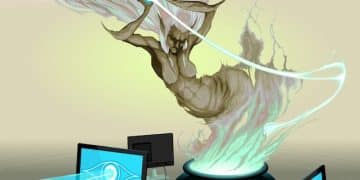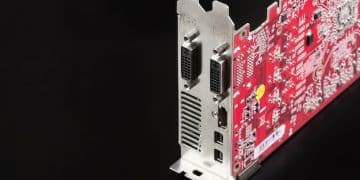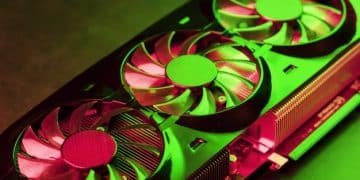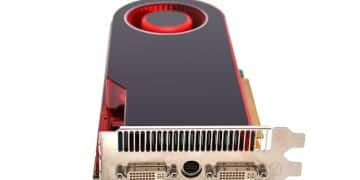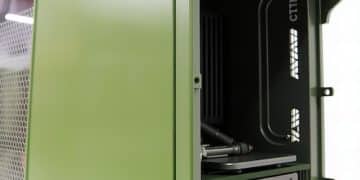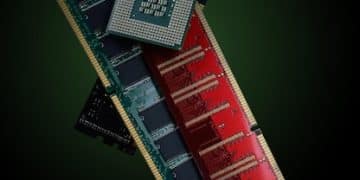Troubleshooting NVIDIA GPU Issues: A Gamer’s Guide for US Users
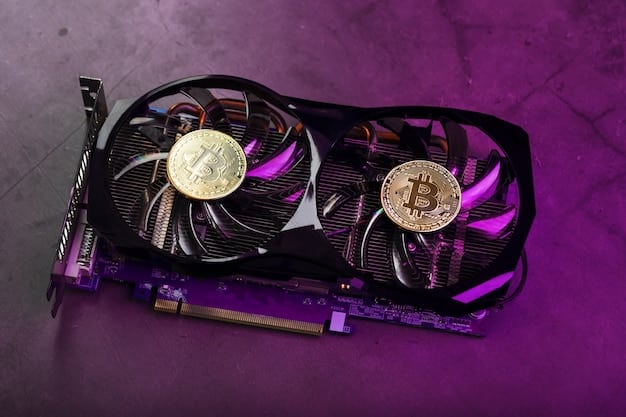
Troubleshooting common NVIDIA GPU problems involves identifying symptoms such as visual artifacts, driver issues, overheating, and system crashes, then applying targeted solutions like driver updates, hardware checks, and thermal management to restore optimal gaming performance for users in the US.
Is your NVIDIA GPU causing headaches during your gaming sessions? Don’t let technical issues ruin your immersive experiences. This guide provides practical troubleshooting common NVIDIA GPU problems for gamers in the US, helping you diagnose and resolve issues quickly and efficiently.
Understanding Common NVIDIA GPU Problems
NVIDIA GPUs are essential for modern gaming, delivering stunning visuals and smooth performance. However, these complex components can encounter various issues, impacting your gaming experience. Understanding these problems is the first step towards effective troubleshooting.
Visual Artifacts and Distortions
Visual artifacts, such as strange lines, textures, or color distortions, can indicate several underlying problems. These issues can range from minor annoyances to game-breaking glitches.
Driver-Related Issues
Drivers are software components that allow your operating system and games to communicate with your GPU. Outdated, corrupted, or incompatible drivers can cause various problems, including crashes, freezes, and performance drops.
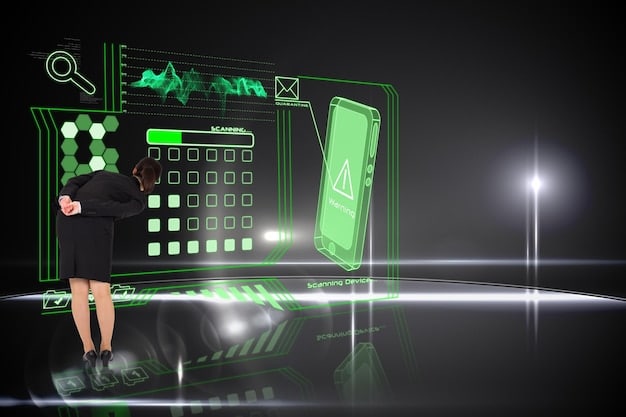
Here are some common causes behind the problems mentioned above:
- Driver incompatibility
- Overclocking your hardware
- Your temperature is too high
NVIDIA GPUs are essential for modern gaming, delivering stunning visuals and smooth performance. However, like any complex component, these cards can encounter various issues. Understanding common problems like driver issues, overheating, and artifacting is the first step to effective troubleshooting.
Diagnosing Your NVIDIA GPU Issue
Before you can fix an NVIDIA GPU problem, you need to accurately diagnose the cause. This process involves observing symptoms, checking hardware components, and using diagnostic tools. Proper diagnosis ensures you apply the right solutions, saving time and effort.
Checking for Overheating
Overheating is a common cause of GPU problems. High temperatures can lead to performance throttling, crashes, and even hardware damage. Monitoring your GPU temperature is crucial for identifying this issue.
Inspecting Hardware Connections
Loose or faulty connections can prevent your GPU from functioning correctly. Ensure that all cables are securely connected and inspect the card itself for any visible damage.

When diagnosing the issue, take the following steps:
- Monitor card temperatures during gameplay.
- Check for secure connections to the motherboard and power supply.
- Inspect the card for physical damage or dust buildup.
Diagnosing NVIDIA GPU issues effectively requires a systematic approach. Start by observing specific symptoms like artifacting, crashes, or performance drops during gameplay. Use monitoring software to check temperature, clock speeds, and fan speeds to identify potential overheating or throttling.
Updating and Managing NVIDIA Drivers
Keeping your NVIDIA drivers up-to-date is crucial for optimal performance and stability. NVIDIA regularly releases new drivers to address bugs, improve performance, and add support for new games. Properly managing your drivers can resolve many common issues.
Installing the Latest Drivers
NVIDIA provides the GeForce Experience software, which simplifies the process of updating your drivers. This tool automatically detects new drivers and allows you to install them with just a few clicks.
Rolling Back to Previous Versions
Sometimes, new drivers can introduce new problems. If you encounter issues after updating, rolling back to a previous version can often resolve them.
Take the following actions to keep your NVIDIA Driver up to date:
- Download through GeForce Experience
- Always rollback if you find issue with the newer driver version.
- Keep the driver updated for new releases
Managing NVIDIA drivers effectively is crucial for maintaining peak GPU performance and stability. Gamers should regularly update their drivers to benefit from the latest performance improvements, bug fixes, and compatibility updates. Utilizing GeForce Experience simplifies this process, providing notifications for new driver releases and streamlined installation.
Addressing Overheating Issues
Overheating is a prevalent problem that can significantly impact GPU performance and longevity. Implementing effective cooling solutions is essential for maintaining optimal operating temperatures and preventing damage.
Improving Case Airflow
Proper case airflow helps dissipate heat generated by the GPU. Ensure that your case has adequate intake and exhaust fans to promote airflow.
Cleaning Your GPU
Dust buildup on the GPU’s heatsink and fans can reduce its cooling efficiency. Regularly cleaning your GPU can improve its ability to dissipate heat.
Here are some ways to resolve the overheating GPU:
- Check whether the GPU fan is working
- Reapply thermal paste to the GPU
- Improve your system’s airflow by setting a proper fan
Effective heat management is crucial for maintaining optimal NVIDIA GPU performance, especially during intense gaming sessions. Heat-related issues can manifest as performance throttling, system instability, or even permanent hardware damage. Therefore, gamers should proactively address overheating concerns to ensure long-term system health.
Fixing Software and Compatibility Problems
Software conflicts and compatibility issues can sometimes cause problems with your NVIDIA GPU. Troubleshooting these issues involves identifying conflicting software, adjusting settings, and ensuring compatibility.
Identifying Conflicting Applications
Some applications can conflict with your GPU drivers, leading to crashes or performance issues. Closing unnecessary applications can help resolve these conflicts.
Adjusting Game Settings
Optimizing game settings can reduce the load on your GPU and improve performance. Lowering graphics settings and resolution can often resolve compatibility issues.
Follow these steps to fix software and compatibility issues:
- Check if software compatibility is compatible with the GPU
- Make sure your drivers are up to date
- Adjust game settings to lower or medium
Resolving software and compatibility problems is essential for ensuring smooth NVIDIA GPU performance across various applications and games. Often, conflicts between software or outdated drivers can lead to instability, driver crashes, or performance degradation. A systematic approach to troubleshooting software and compatibility issues can alleviate these problems and restore optimal functionality.
Hardware Checks and Advanced Troubleshooting
If basic troubleshooting steps don’t resolve your NVIDIA GPU problem, more advanced hardware checks may be necessary. These checks involve inspecting the GPU itself and testing it in different environments.
Testing the GPU in Another System
If possible, test your GPU in another computer to determine if the problem lies with the GPU or your system. This can help isolate the cause of the issue.
Checking Power Supply and Connections
Ensure that your power supply is providing enough power to your GPU and that all connections are secure. Insufficient power can cause crashes and performance issues.
Try the following suggestions to find the root of the problem:
- Inspect the card for physical damages
- Test the GPU on other systems
- Check all power connections
When standard troubleshooting methods fail to resolve persistent NVIDIA GPU issues, advanced hardware checks and troubleshooting become necessary. These steps involve a more in-depth inspection of the GPU and its interaction with the broader system. Employing these advanced techniques can help identify underlying issues and restore proper GPU functioning.
| Key Point | Brief Description |
|---|---|
| 🌡️ Overheating | Ensure proper cooling and airflow to prevent thermal throttling. |
| ⚙️ Driver Updates | Keep drivers updated via GeForce Experience for optimal performance. |
| 🔌 Hardware Connections | Check secure connections to motherboard and power supply. |
| 🎮 Compatibility | Adjust game settings to balance performance and visual quality. |
Frequently Asked Questions
▼
Overheating in NVIDIA GPUs can result from poor case airflow, dust buildup, or inadequate cooling solutions. Ensure your system has sufficient ventilation and regularly clean the GPU’s heatsink.
▼
It’s recommended to update your NVIDIA drivers whenever a new version is released, especially for new game releases or performance improvements. Use GeForce Experience for notifications.
▼
Visual artifacts are distortions or anomalies in graphics, indicating potential GPU damage, driver issues, or overheating. Check temperatures and try rolling back drivers to resolve.
▼
Yes, improper overclocking can cause overheating and potential damage. Ensure you have adequate cooling and monitor temperatures when overclocking your GPU.
▼
Consult the GPU’s specifications for its power requirements and ensure your power supply meets or exceeds these. Insufficient power can cause crashes and instability during gaming.
Conclusion
Troubleshooting common NVIDIA GPU problems can seem daunting, but with a systematic approach and the right tools, most issues can be resolved. By understanding common problems, diagnosing issues effectively, and implementing the appropriate solutions, gamers in the US can ensure their NVIDIA GPUs deliver optimal performance and longevity for years to come.
